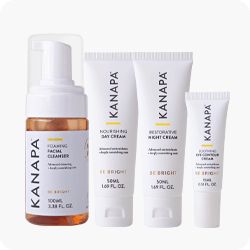I’m not a mom just yet, but I know that no mother in her right mind would pack her child’s lunch box with only four Twinkies. We usually stick with the classics, maybe peanut butter and jam on whole wheat bread, a cup of apple jelly and a juice box. That sounds pretty good, doesn’t it? Sure, it contains some nutrients and fiber, but did you know your child would also be getting approximately the same amount of sugar that’s in four Twinkies?
In this day and age, with today’s booming food industry, it can be very hard for parents to monitor how much sugar a child eats. This is because the foods marketed towards children today are becoming significantly sweeter than before, resulting in a generation of taste buds accustomed to and reliant on sugar.
It’s not hard to see why children love sugar – they have a preference for it as babies – but overloading them with too much sugar may not only prevent their taste buds from maturing but may also result in the child being unable to appreciate or eat a variety of foods when they get older.
We all know the main effects of sugar on children such as behavioural changes, tooth decay and weight gain; but what is not often discussed is sugar’s effect on brain development in children.
Research suggests that children are more sugar sensitive than adults; and as the brain is growing rapidly in younger years, the effects of sugar on behaviour and learning are exaggerated.
According to researchers at centres including the National Institutes of Health, young children who have long-term high blood sugar levels are more likely to have slower brain growth and poorer memory as adults.
So how much is considered to be excess sugar? Children’s sugar levels should be limited to up to three teaspoons per day; meaning any more than this in food and drink could potentially be affecting brain development and function.
A great way to get on top of this is to cut out processed foods from lunchboxes.
- Limit portions of cookies, candies or baked goods.Instead, try fruit-based desserts.
- Limit sugary cereals. Look for whole-grain cereals that don’t have added sugar and add nuts, fruit and cinnamon if you want to jazz it up.
- Avoid flavoured yoghurt which has high sugar content and choose plain yoghurt instead. Try adding sweetness by blending in frozen berries or adding some honey.
- Limiting juice, sports drinks and other flavoured beverages. Stick to water and unflavoured milk.
While we are on the topic of brain function and development, did you know that 60% of dried brain weight is fat? Sounds a bit icky, but that is why good fats are so important to brain health.
So, you cut down on sugar in your child’s lunchbox – what’s next? Increase good fats!
You could replace some of the sugar in their diet with good fats such as nuts or seeds and possibly some fish. Now I know fish isn’t every child’s favourite food to eat, and if you are struggling to get your little one to eat fish regularly, you may be interested in our Omega-3 / DHA Fish Oil. Studies have shown that fish oil is great for brain development and function – particularly in growing children. We have also recently launched our Omega-3 / DHA Children's which means the capsules are easy to swallow.
What are your day-to-day lunch box ideas? What are your tips for cutting out sugar in your child’s diet? We would love to hear from you!
In good health.
References:
- For general information on sugar’s effects on children read here. http://www.parenting.com/article/sugar-does-it-make-kids-hyper
- A NIH study showing how high blood sugar could be detrimental to the developing brain of young children. http://www.nih.gov/news/health/dec2014/nichd-17.htm
- More information on sugary drinks and its effect on memory can be seen here http://www.medicaldaily.com/sugary-drinks-may-damage-childrens-brains-so-badly-it-affects-their-memory-295558


 Supplements
Supplements Superfoods
Superfoods Bundles
Bundles









